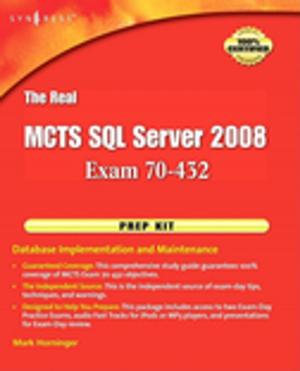Reaction Mechanisms in Environmental Engineering
Analysis and Prediction
Nonfiction, Science & Nature, Technology, Environmental, Agriculture & Animal Husbandry| Author: | James G. Speight | ISBN: | 9780128006672 |
| Publisher: | Elsevier Science | Publication: | August 13, 2018 |
| Imprint: | Butterworth-Heinemann | Language: | English |
| Author: | James G. Speight |
| ISBN: | 9780128006672 |
| Publisher: | Elsevier Science |
| Publication: | August 13, 2018 |
| Imprint: | Butterworth-Heinemann |
| Language: | English |
Reaction Mechanisms in Environmental Engineering: Analysis and Prediction describes the principles that govern chemical reactivity and demonstrates how these principles are used to yield more accurate predictions. The book will help users increase accuracy in analyzing and predicting the speed of pollutant conversion in engineered systems, such as water and wastewater treatment plants, or in natural systems, such as lakes and aquifers receiving industrial pollution. Using examples from air, water and soil, the book begins with a clear exposition of the properties of environmental and inorganic organic chemicals that is followed by partitioning and sorption processes and sorption and transformation processes.
Kinetic principles are used to calculate or estimate the pollutants' half-lives, while physical-chemical properties of organic pollutants are used to estimate transformation mechanisms and rates. The book emphasizes how to develop an understanding of how physico-chemical and structural properties relate to transformations of organic pollutants.
- Offers a one-stop source for analyzing and predicting the speed of organic and inorganic reaction mechanisms for air, water and soil
- Provides the tools and methods for increased accuracy in analyzing and predicting the speed of pollutant conversion in engineered systems
- Uses kinetic principles and the physical-chemical properties of organic pollutants to estimate transformation mechanisms and rates
Reaction Mechanisms in Environmental Engineering: Analysis and Prediction describes the principles that govern chemical reactivity and demonstrates how these principles are used to yield more accurate predictions. The book will help users increase accuracy in analyzing and predicting the speed of pollutant conversion in engineered systems, such as water and wastewater treatment plants, or in natural systems, such as lakes and aquifers receiving industrial pollution. Using examples from air, water and soil, the book begins with a clear exposition of the properties of environmental and inorganic organic chemicals that is followed by partitioning and sorption processes and sorption and transformation processes.
Kinetic principles are used to calculate or estimate the pollutants' half-lives, while physical-chemical properties of organic pollutants are used to estimate transformation mechanisms and rates. The book emphasizes how to develop an understanding of how physico-chemical and structural properties relate to transformations of organic pollutants.
- Offers a one-stop source for analyzing and predicting the speed of organic and inorganic reaction mechanisms for air, water and soil
- Provides the tools and methods for increased accuracy in analyzing and predicting the speed of pollutant conversion in engineered systems
- Uses kinetic principles and the physical-chemical properties of organic pollutants to estimate transformation mechanisms and rates















